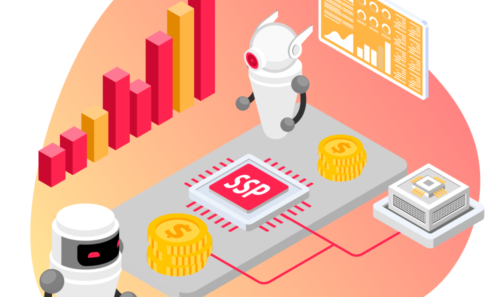Clash of the Giants: DoubleClick vs. AppNexus
The state of rivalry between DoubleClick and AppNexus. Which platform yields more revenue for publishers? How big are these giants?
Such technological giants as DoubleClick and AppNexus may both successfully provide internet ad services for agencies and marketers.
Each time they are discussed, the same old questions always arise. How good is their reach? Are they connected to the same traffic sources? More importantly, which one yields better revenue?
These platforms are considered to be two of the biggest players in the digital advertising market. Specifically, they support advertisers in their search for the most payable and effective display ad inventory. They also provide help for publishers to help them drive their yield. Both platforms offer an array of possibilities and services standardly available at DSPs and SSPs.
Demand-side platform (DSP), a technological puzzle that goes along with a much larger RTB (real-time bidding) ecosystem. It enables advertisers to purchase display ad inventory via RTB exchanges. Whereas the supply-side platform (SSP) is created for web publishers. It’s supposed to find the best demand for their advertising space inventory, fill it with ads, and receive yield effectively. Both AppNexus and DoubleClick combine all these features into a one-stop-shop platform.
AppNexus is an internet technology company that harnesses data and machine learning to power the world’s open digital audience platforms. Companies come to DoubleClick for expertise in ad serving, media, video, search, and affiliate marketing to help them make the most of the digital medium. Basically, DoubleClick helps web publishers collect the most booming deals out of the digital medium.
DoubleClick vs AppNexus – where is the underlying difference and which one is the prime tool for Publishers?
Both AppNexus and DoubleClick offer core products that let their publishers attract, delight, and monetize their audiences, aligning them accordingly with their interests.
So, how does DoubleClick differ from AppNexus? Firstly, DoubleClick provides its users with much larger coverage and exclusive access to YouTube. With that being said since AppNexus offers less coverage, not all inventory can be purchased. It also goes without saying that DoubleClick opens up a wider range of possibilities, as it offers more sites than AppNexus does. According to SimilarTech, when it comes to usage coverage, DoubleClick has significantly more outstanding coverage in various web categories (including People & Society, Business & Industry, and 244 other categories).

According to Similar Tech, DoubleClick is unquestionably leading in Top 10K Sites, Top 100K Sites, Top 1M Sites, and The Entire Web. AppNexus, on the other hand, is lagging behind in terms of market share, losing to DoubleClick in all categories.
HEADER BIDDING = ADVANCE BIDDING = PRE-BIDDING
Yet, it must be pointed out that AppNexus does put header bidding on the table, something that DoubleClick doesn’t participate in, though it gets verified nonetheless. But DoubleClick does have its dynamic exchange bidding allocation. It’s a nice feature, but it’s not enough to fully replace the header bidding technology itself. And it’s already been the topic of a few controversies.
Header bidding, also known as advance bidding or pre-bidding, is a programmatic technology that enables publishers to place their inventory on the market to multiple ad exchanges at the same time, prior to making calls to ad servers. This technique ensures an increased yield within a shorter span of time, and its popularity is growing. In short, AppNexus does the entire job for its users with header bidding. It aims at a significantly more transparent and improved tech integration that engages publishers, revenue partners, and ad tech companies.
All that glitters is not gold
Even if it goes smoothly with header bidding at AppNexus, access to detailed data has been somewhat restricted to a paid service. What they do allow though is the possibility to add other providers through the cloud. DoubleClick, on the other hand, does offer access to free data, yet the process of adding providers can be somewhat impeded at times. The free access to DoubleClick is a definite plus – but while the platform is free to use, AppNexus offers both free and paid options, depending on the client’s expectations and needs.






